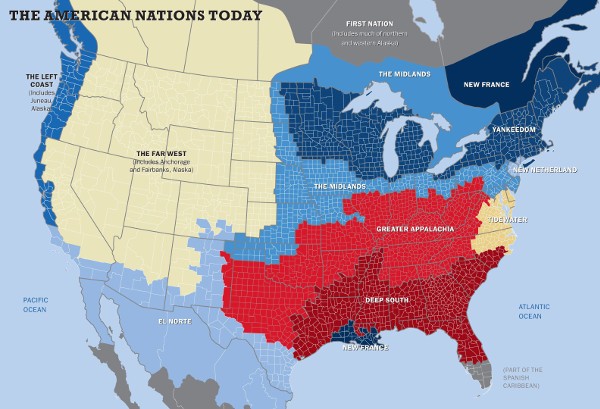An award-winning author has created a map that shows what the U.S. would look like if it was divided by its 11 distinct cultures.
Colin Woodard's book, American Nations: A History of the Eleven Rival Regional Cultures in North America, explains how the country's past has created areas with specific and unique cultural aspects. He created an altered map of the United States to visually represent the divided nations. Each are individually renamed to titles like "Greater Appalachia," "Yankeedom," "Tidewater" and "The Midlands."
So how do these 11 regions differ? According to Woodard, each nation has its own set of ideals and beliefs that have been developing since they were originally settled by colonists and explorers. If you can identify where and how these cultures developed, you'll be able to understand how individuals within those divides think. This can help understand views on social issues like gun control and states rights.
"The country has been arguing about a lot of fundamental things lately including state roles and individual liberty," Woodard told Business Insider. "[But] in order to have any productive conversation on these issues, you need to know where you come from. Once you know where you are coming from it will help move the conversation forward."

Colin Woodward and Tufts/Brian Stauffer
For instance, Woodard explains that the area he identifies the "Deep South" was established by English slave lords. These individuals held a skewed system of democracy, meaning many people were enslaved by a small group of powerful people. That system caused a still-lingering tendency to fight against widespread federal powers, and high taxes on the wealthy.
READ MORE: This Man Created a $250 DIY Camper to Explore America's National Parks
"Yankeedom," Woodard argues, values education, intellectualism and is comfortable with government regulation. The region's inhabitants tend to hold "utopian" ideals because the area was first settled by radical Calvinists.
To find more information about each region of the Woodard's map, check out his recent in-depth article for Tufts Magazine.
This post was originally published on February 22, 2017.





